Webinar video available

If you missed yesterday’s webinar with Ida Milne, you can watch it here.

If you missed yesterday’s webinar with Ida Milne, you can watch it here.
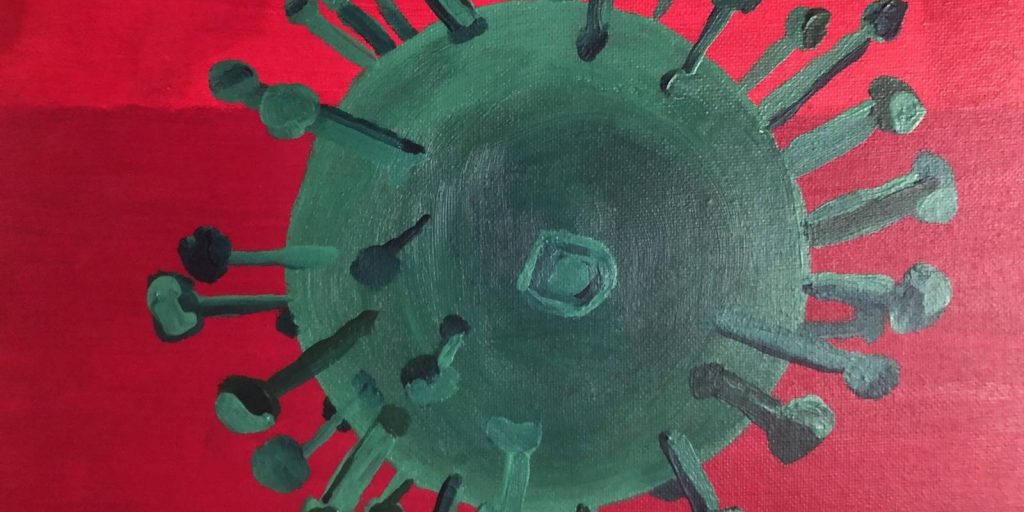
Next week, Mathias Mølbak Ingholt, a PhD student at PandemiX Center, Department of Science and Environment, Roskilde University, Denmark will present in our webinar series:
Occupational characteristics and spatial differences during an intermittent fever epidemic in early 19th century Denmark.
In the 1780’s, the high-mortality regime with frequent mortality shocks in the form of epidemics, famines and wars ended in Denmark. The 19th century is characterized as a century of declining infant- and child mortality, improving life expectancy and population growth. One event however contradicts this overall pattern: a mortality crisis in eastern Denmark that began in 1826 and ended in an explosive epidemic in the late summer and fall of 1831. In some villages, over 10% of the population died, and case fatality rates were as high as 60% some places. The epidemic began at the same time across larger geographical areas, and there is no traceable diffusion. In its time, it was labelled an “intermittent fever” epidemic – a diagnosis later associated with malaria. The theory of malaria has however been rebuked, and it has instead been suggested that it was a mass-infection of mold (Manniche, 1997). Despite being a demographic anomaly reminiscent of the high-mortality regime, the epidemic remains understudied by demographers. In this article, I study the spatial differences in mortality during the epidemic and the occupational characteristics of its victims.
Background: The objective of this study was to document whether and to what extent there is an association between socioeconomic status (SES) and disease outcomes in the last five influenza pandemics.
Methods/principle findings: The review included studies published in English, Danish, Norwegian and Swedish. Records were identified through systematic literature searches in six databases. We summarized results narratively and through meta-analytic strategies. Only studies for the 1918 and 2009 pandemics were identified. Of 14 studies on the 2009 pandemic including data on both medical and social risk factors, after controlling for medical risk factors 8 demonstrated independent impact of SES. In the random effect analysis of 46 estimates from 35 studies we found a pooled mean odds ratio of 1.4 (95% CI: 1.2–1.7, p < 0.001), comparing the lowest to the highest SES, but with substantial effect heterogeneity across studies,–reflecting differences in outcome measures and definitions of case and control samples. Analyses by pandemic period (1918 or 2009) and by level of SES measure (individual or ecological) indicated no differences along these dimensions. Studies using healthy controls tended to document that low SES was associated with worse influenza outcome, and studies using infected controls find low SES associated with more severe outcomes. A few studies compared severe outcomes (ICU or death) to hospital admissions but these did not find significant SES associations in any direction. Studies with more unusual comparisons (e.g., pandemic vs seasonal influenza, seasonal influenza vs other patient groups) reported no or negative non-significant associations.
Conclusions/significance: We found that SES was significantly associated with pandemic influenza outcomes with people of lower SES having the highest disease burden in both 1918 and 2009. To prepare for future pandemics, we must consider social vulnerability. The protocol for this study has been registered in PROSPERO (ref. no 87922) and has been published Mamelund et al. (2019).
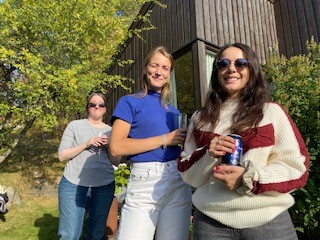
This weekend PANSOC kicked off the academic year of 2021-22 by having a garden party with Brats, Beer & Music. We celebrated ourselves and our achievements over the past 9 months since our inauguration. Our preliminary stats shows that we have published 9 journal articles, 2 paper are accepted, 1 article is a R&R, 3 papers are submitted and we have tons of new manuscripts. We have also contributed to the report of the Norwegian Corona-Comission; held 15 national & international key-notes, 2 invites guest lectures, and 4 regular conference presentations; been interviewed on TV, radio and newspapers 21 times and participated in 4 pod-casts; held 12 PANSOC webinars and one of our masters students got the student of the year price at OsloMet.
Thanks to event maker Roar Smelhus who suggesting a concert with Ole Kirkeng. He hold a fantastic mini-concert in beautiful Norwegian fall weather.
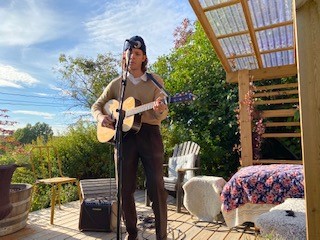
Svaret på dette svært sentrale spørsmålet og mer gis av Vibeke Narverud Nyborg i denne rykende ferske podkasten. Hvordan ble helselover brukt under Spanskesyken? – Viten og snakkis | Podcast on Spotify
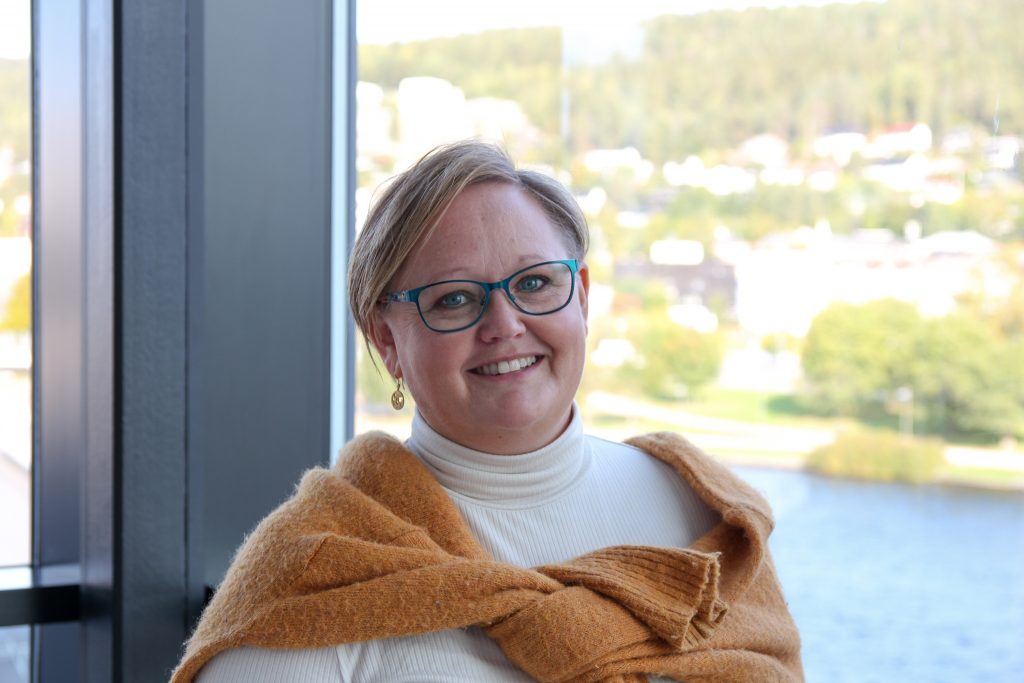
Forgetting and Remembering the Great Flu: Collecting and Shaping Narratives

The 1918-19 influenza pandemic was for many years underrepresented in historiography, until Alfred Crosby and Richard Collier’s groundbreaking works stimulated reassessments of its impact. But how was it remembered at community or individual level? In this paper, Ida Milne, a social historian of disease, explores the history of her own collecting of 1918-19 flu memory in Ireland, looking at how it has undergone significant sea changes since she first recorded interviews with survivors in 2006. What might these changes indicate for Covid-19 memory?
Ida Milne is European History lecturer at Carlow College, Ireland, a visiting research fellow at Trinity College, Dublin, chair of the health and environment strand of the European Social Science History Conference and co-chair of the international committee of the Oral History Association. Her monograph, Stacking the Coffins, Influenza War and Revolution in Ireland 1918-19 was published by Manchester University Press in 2018, and was awarded a Choice Reviews OATS (Outstanding Academic Titles) in 2019.
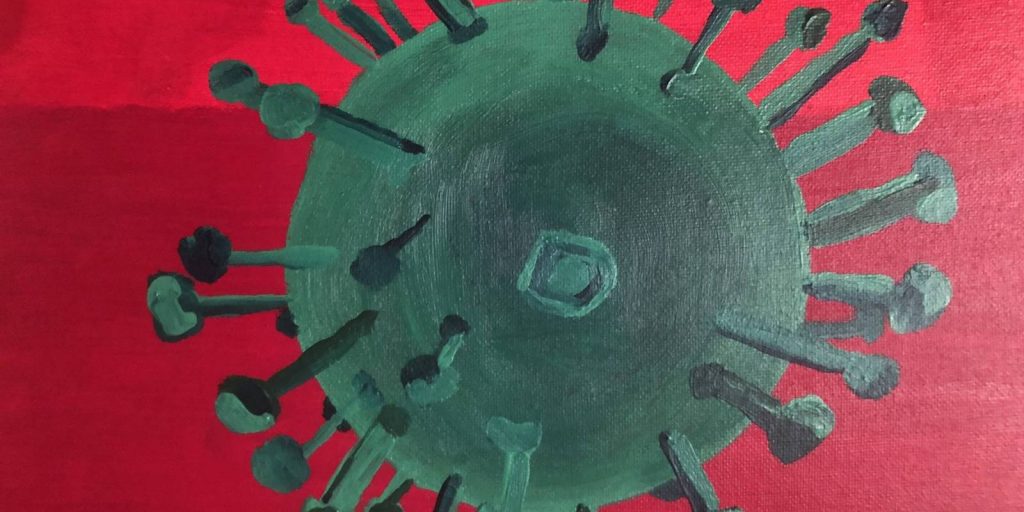
PANSOC’s Marie Skłodowska-Curie Actions (MSCA) candidates will be presenting their proposals and preliminary insights. We hope you will join us to learn more about these exciting projects! This week only, we will have a delayed start at 1700 CET. Contact jessicad@oslomet.no if you need a Zoom link.
Alexandra (Sasha) Blinkova, Herzen State Pedagogical University (St. Petersburg)
Religion and COVID-19 in social media: a case of Russia and Belarus
COVID-19 is not the first pandemic the world has faced but it is the first pandemic that has changed religious practices and religious authorities’ structures worldwide due to the use of social media platforms in dissemination of religious views and services. Russia and Belarus, two Eastern European, predominantly Russian-speaking, former Soviet countries, are not unique in how religious sources of information influence the part of society that tends to rely on them in times of overwhelming stress and uncertainty like pandemic. Nevertheless, Russia and Belarus are an intriguing case for comparison because while they are both predominantly Orthodox Christian societies and belong to the same religious organization, i.e., the Russian Orthodox Church (Moscow Patriarchate), the level of societal trust in church authorities in Russia and Belarus varies greatly. In particular, due to dramatic changes in Belarus for political reasons, information coming from official religious sources is expected to be considered less trustworthy and valuable by the recipients. This project will explore whether this hypothesis also applies to unofficial religious voices on social media platforms, such as bloggers (both clergy and lay), journalists, and celebrities. Moreover, it will determine whether religious infodemic, an epidemic of religious information in this case related to coronavirus, has a detrimental effect on shaping attitudes towards vaccination and recognizing COVID as a real health risk for everyone.
Ana Vuin, Charles Darwin University
Regional Health Professional’s experiences during the COVID-19 crisis: Is there a mismatch in between the theory and practice?
COVID-19 Pandemic affected communities worldwide and had a massive impact on the livelihoods of both urban and rural populations and their physical and mental well being. However, there is a limited understanding of challenges regional practitioners and allied health professionals go through during the COVID-19 Pandemic. The available literature is more focused on the ‘general’s public trust, confidence, mental health and challenges’ rather than exploring such matters on a healthcare (provider) level. Even before COVID-19 Pandemic, Regional communities were struggling with the limited numbers of health facilities, healthcare options, reduced staff, challenging process of recruitment and retention, mental health support (including building rapport in such circumstances), so the additional burden of Pandemic can only contribute to the already existing challenges healthcare professionals experience in these areas. My research aims to explore the initiatives and strategies that were developed to support the health professionals during these times, and compare them with the lived experiences of Norwegian (and potentially Swedish) regional health professionals amid COVID-19 Pandemic. The common knowledge is that the realities of ‘regional or rural’ living are different from urban, therefore the healthcare professionals practicing in such areas will have significantly different experiences too. For that matter, it is necessary to hear their voices and explore their perspectives, challenges, and coping mechanisms as they are the backbone of these communities- providing healthcare services to vulnerable populations.

We are thrilled to share with you that PANSOC affiliated student Carla has won Student of the Year award at 2020/2021 at OsloMet.
Student of the year is a prestigious award given to a student who has excelled in their efforts for the study and learning environment, and has been a role model for other students. Carla was nominated for the following reasons:
Having moved to Norway during the pandemic from the UK, making connections with anybody at all was a challenge, but Carla has nevertheless built a great network wherever it has been possible. She made the very most of her time here. This included spending time with her new friends and other international students during special times of the year (Christmas, New Year, Easter etc.). After being affiliated with the Centre for Research on Pandemics & Society (PANSOC) in 2021, she also suggested other fellow students to contact and become part of PANSOC.
Carla’s affiliation with PANSOC and the extra-curricular Norwegian language classes that she takes at OsloMet are great examples of how she has excelled and strengthened her studies in a positive way. This is also alongside continuing to receive good grades in her mandatory studies and engaging in the Buddy-program which unfortunately was canceled due to Covid-19.
Carla contributes to OsloMet’ s reputation through social media both personally and through her student staff work with OsloMet social media. Part of her success in this role has been widening OsloMet’ s international audience by consistently sharing information in English. Carla’s community involvement and understanding of people’s lives and background can also be mostly demonstrated by a particular video where she discusses tips on how to live as an international student during corona, where she highlight the need to care for our mental and physical health during this time.
Carla Louise Hughes is a great ambassador for OsloMet.
You can read more about Carla and her price here: https://ansatt.oslomet.no/en/siste-nytt/-/nyhet/carla-er-arets-student
Racial Disparities in Mortality During the 1918 Influenza Pandemic in United States Cities:
Videoer PANSOC – OneDrive (sharepoint.com)

Cristina is a student at Southeastern Norway and has Professor Ole Georg Moseng as her advisor. She will, however, be affiliated with PANSOC for the academic year 2021-22. Please read more below about her exciting project on the terrible pandemic death toll on a Norwegian naval ship in 1918.
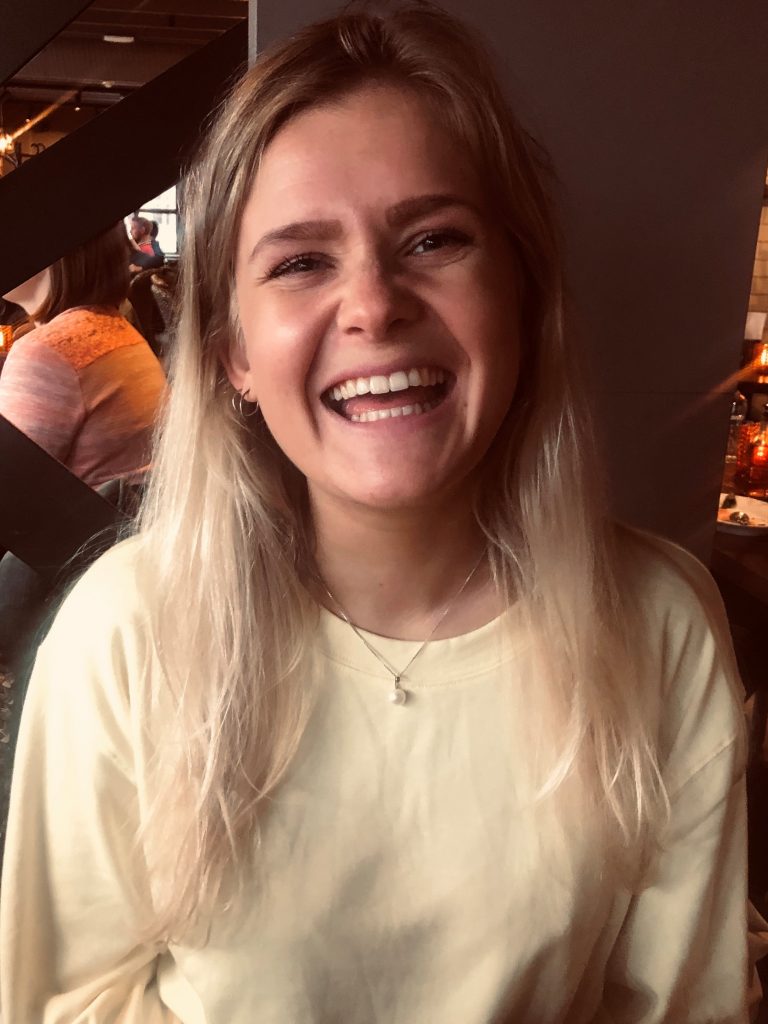
Tell us about your project:
My master´s thesis will address how the 1918 influenza pandemic influenced morbidity and mortality on the Norwegian naval ship “Kong Sverre” who received 500 new recruits in October 1918. This particular crew suffered a massive loss during the autumn 1918, despite it being an exercising military ship in a neutral country. I will use rich quantitative and qualitative source material to study why almost one in three of those who fell symptomatically ill died.
You are starting a project about a historical pandemic in the middle of a current pandemic. How does that feel?
It is interesting to learn more about a historical pandemic, while at the same time live through an evolving pandemic. There are both differences and similarities between the 1918 influenza and COVID-19. While young adults were hardest affected in 1918, it is the elderly who have the highest risk of a severe disease in 2020. Just as in 1918, crowded conditions and lack of early interventions also resulted in massive spread disease in 2020. Examples are massive spread of COVID-19 among tourists in crowded after-ski bars in the Alps, on cruise ships in Japan and at meat packing plants in the USA.
Why are you doing a masters in Norway and with PANSOC?
I´m currently on the last year of my history teacher education at the University of Southeastern Norway. Because I wanted to write a thesis on the 1918 influenza, my Professor Ole Georg Moseng advised me to contact Svenn-Erik Mamelund at PANSOC. After coming up with the idea to study the catastrophic case of Kong Sverre, I was happy to accept an affiliation with PANSOC
What are your plans for a future dream-project in academia?
I would love to continue doing pandemic research. It would be exciting to analyze outbreaks of COVID-19 on naval ships to make a comparative study of the pandemic disease burden in the military in 1918 and the current pandemic.
It would also be thrilling to do a comparative study on other aspects of the two pandemics, such as how social inequality in health would affect the outcomes of lethality in both pandemics.